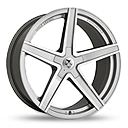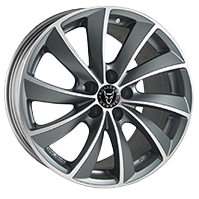
- EUROPE-WIDE
DELIVERY - SAMEDAY DISPATCH
ORDERS BEFORE 1PM - 020 8593 7374
CALL US
You have no items in your shopping cart.

At PIT STOP, we are committed to help you at every step of the way. Our experienced, expert service team will ensure your vehicle is supplied and fitted with tyres, which are correctly specified, fully tested and fitted at the highest professional level of Quality Control and Compliance.
WE ONLY SUPPLY YOU THE BEST









UK Tyre Law
The legal limit for minimum depth of tyre tread is 1.6 millimetres across the central 75 per cent of tread around the complete circumference of the tyre.
The Motor Vehicle Tyres (Safety) Regulations 1994 state that a part-worn tyre must not have:
- Cuts longer than 25mm – or 10 per cent of the section width of the tyre – which are deep enough to reach the ply or cord.
- Lumps, bulges or tears caused by separation or failure of the tyre's structure.
- Any penetration damage that has not been repaired.
*PITSTOP’s strict selection and testing policy does not permit the supply or fitting of any part worn tyre, which has been damaged in any way and repaired afterwards.
Tyre Mixing
It is illegal for a vehicle to have:
- Radial tyres on the front wheels and cross ply tyres on the rear wheels.
- A cross ply tyre on one side with a radial on the other.
All steerable axles must be fitted with tyres of the same construction, as must all driven axles that are not steerable.
Tyre Service Description
All tyre walls must display a service description i.e. load and speed index. A vehicle should not be driven at a higher speed or carry more weight than the limit indicated on the tyre service description.
Penalties
If you drive a vehicle fitted with an illegal or defective tyre on a road, a police officer may either give you a Fixed Penalty Notice or report your case for prosecution. In law, the driver and the owner (if different) are liable and one or both may receive a court summons. The maximum fine which a court can impose for using a vehicle with a defective tyre is:
- £2,500 and three penalty points
- £5,000 in the case of a goods vehicle or a vehicle designed to carry 8 passengers or more.
If a vehicle is fitted with more than one defective tyre, you can be prosecuted for each tyre found to be illegal. Disqualification from driving is also possible in certain circumstances.
Tyre Marking Identification
The markings displayed on the sidewall of your tyres are to help correctly identify their size and specification. They also confirm that the tyre has been tested and approved to European standards – indicated by the ‘E’ marking - and other country safety standards.
Tyre marking example:
175 / 70R13 82S
Code Explanation
175 Tyre width – nominal section width of the tyre in millimetres
70 Tyre profile/ aspect ratio – height of tyre wall as a percentage of nominal section width
R Radial – tyre construction type
13 Tyre Size - diameter of tyre inner rim in inches
82 Load Index - numerical code corresponds to load capacity (82 = 475 Kg)
S Speed Rating - alphabetical code corresponds to maximum speed at full load (S =112 mph)
Winter Tyres
The fitting of winter tyres is recommended as a practical solution if you live in a remote area where winter conditions are likely to be more severe and persist for a longer period of time than the rest of the country. Winter tyres are made from a rubber compound with a tread pattern specifically designed to retain flexibility in low temperatures (below +7C). As well as giving a better grip on wet roads in cold conditions, winter tyres also provide good braking/traction performance on snow/ice, stopping up to 35.7 feet (11 metres) earlier than regular tyres in icy conditions when braking at 20mph.
All Season tyres
In the UK, winter tyres are not really suited to all year round use. A recommended alternative is to consider buying 'All Season Tyres', which provide low temperature flexibility and a tread pattern of both a normal summer tyre and a hard winter tyre. While unlikely to provide a performance equal to a winter-only tyre, an all season tyre can be expected to provide a better performance on wintry roads than a summer tyre.


